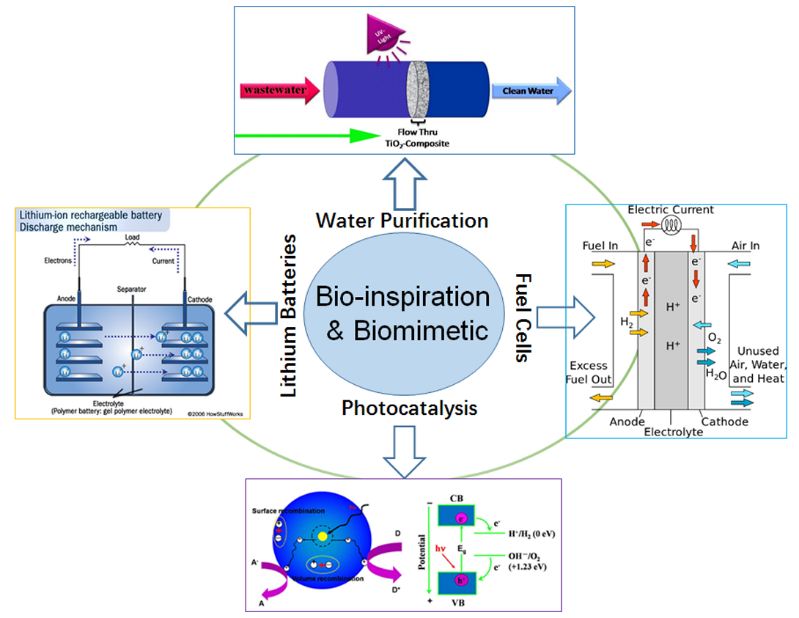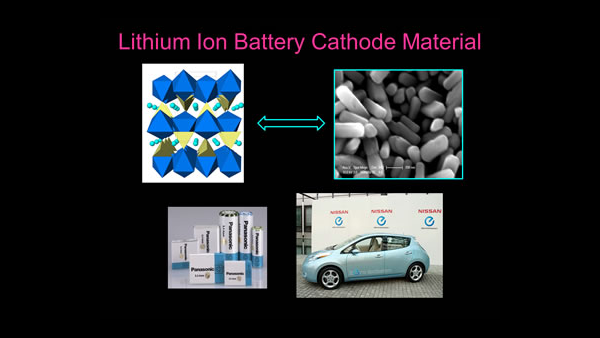Projects: Nanostructured Materials
Bio-inspired and Biomimetic Water Purification Matierals


Biologically Inspired Photocatalytically Active Membranes for Water Treatment
To accommodate the ever-increasing demand for clean drinkable water Advances Oxidation Technologies are being employed to degrade harmful compounds. One such technology uses photooxidative reactions to completely mineralize such compounds to carbon dioxide and water using Titanium dioxide. We are developing Titanium dioxide photocatalytic membranes for water treatment systems based on inspiration from biology.
Bio-inspired synthesis, characterization and application of high performance lithium ion battery cathode materials
We are trying to use bio-inspired methods to synthesize lithium ion battery anode and cathode materials Li(NiCoMn)⅓O2 and LiFePO4. By controlling their morphology and particle size through different synthesize conditions (such as precursors, polymers, solvents, annealing temperature and time, pH, etc), we will be able to optimize their battery performance like extended cycle life, increased capacity and conductivity, etc.


Biologically Inspired Synthesis of Nanostructured Zinc Oxide
Mineralizing biological systems demonstrate how nature can produce elegant structures at room temperature through controlled organic-mineral interactions. Based on inspiration from Nature, we are using organic agents to modify the growth behavior of ZnO nanostructured materials under mild conditions, studying ZnO growth mechanism, thereby to control the size, phase and morphology of ZnO.
Band Gap and Nanostructural Engineering of TiO2


Combinatorial selection of ZnO binding peptide using phage display
Dedecapeptide targeting to specific crystallographic ZnO can be selected using phage display technique. Peptide-directed ZnO nano materials can be utilized as building element for dye-sentisized solar cell (DSSC).
Enzyme Mediated Synthesis of a Semiconducting Metal Oxide

